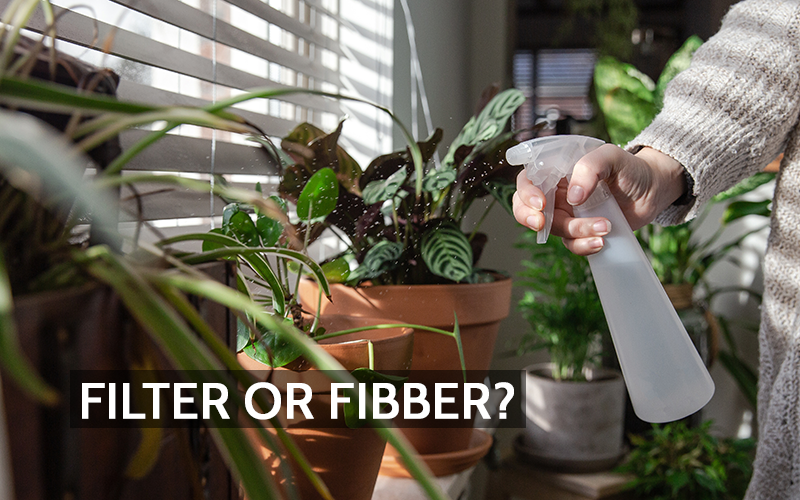Houseplants have modest effects on indoor air quality, yet they’re a powerhouse when it comes to enhancing mental well-being. While some types of greenery can reduce minor levels of volatile organic compounds (VOCs), they fall short as a comprehensive air purification solution. Rather than relying solely on plants, indoor spaces benefit more from air filtration systems designed for effective pollutant removal. Nonetheless, the psychological benefits of houseplants are undeniable, fostering creativity, reducing stress, and increasing productivity. This article explores why houseplants may not be the best choice for air quality improvement—and why they’re still a worthwhile addition to any space.
The Myth of Air Purification Through Plants
The idea that houseplants can effectively clean indoor air stems from a 1989 NASA study. Conducted in controlled lab settings, the study showed that plants could absorb VOCs in a sealed chamber, a setting that hardly resembles the average home or office. This early finding sparked a widespread belief that common houseplants could reduce pollutants indoors. However, subsequent research, such as a 2019 analysis, found that you would need anywhere from 10 to 1,000 plants per square meter to achieve similar pollutant reductions in real-life environments.
The reality? Indoor air is continuously exchanged with outdoor air through natural or mechanical ventilation, a process far more efficient at removing pollutants than a handful of plants. Furthermore, mechanical air purifiers, equipped with HEPA filters, are designed to capture even the smallest particles, something houseplants simply cannot do.
Real World vs. Laboratory Conditions
One major reason plants are ineffective at purifying air is the discrepancy between lab tests and real-world conditions. Lab studies place single plants in small, airtight chambers with injected pollutants. These conditions allow for observable pollutant reductions over time, but the average home is neither small nor airtight. In a typical indoor setting, air exchange alone can clear pollutants faster than plants.
Research has also shown that factors like plant type, soil, and indoor environment all impact a plant’s ability to absorb VOCs, leading to inconsistent results outside of a lab. For example, while snake plants and pothos are often lauded as good air cleaners, their real-world efficiency is minimal when compared to any standard air purifier.
Why Mechanical Filtration Outperforms Plants
When it comes to filtering indoor air, mechanical solutions provide measurable results. High-efficiency particulate air (HEPA) filters can capture particles as small as 0.3 microns with a 99.97% efficiency rate. This capability is vital for filtering out pollutants, allergens, and even viruses from indoor spaces. By contrast, plants have no mechanism to capture such small particles.
Mechanical filters are also scalable. One device can purify the air in an entire room, whereas you’d need hundreds of plants to achieve a comparable impact on air quality. Additionally, air purifiers do not release any allergens, mold spores, or VOCs themselves, an unfortunate risk that comes with some types of houseplants, especially if overwatered.
The Mental Health Benefits of Houseplants
Though houseplants may lack robust air purifying abilities, they offer substantial psychological benefits. Studies show that adding greenery indoors can improve mood, reduce stress, and boost productivity. The WELL Building Standard even promotes having at least 1% of indoor surfaces covered by plants for mental wellness benefits. The aesthetic and mental health value of plants shouldn’t be discounted, especially as these advantages often outweigh any negligible effect they have on air quality.
Enjoy Plants Without Relying on Them for Clean Air
Houseplants are generally weak at improving indoor air quality, but that shouldn’t stop you from filling every sunny room in your home with them. While they may not clean the air, they provide beauty, tranquility, and a mental health boost that few mechanical systems can match. So go ahead—adorn your space with lush greenery. Just remember, for cleaner air, mechanical air purifiers and good ventilation remain your best options.
Related Article:
Spain’s Air Quality Management: Today’s Regulations and Tomorrow’s Outlook
References:


